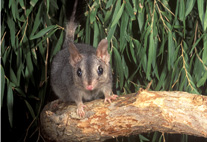Abstract
The Australian Brush-tailed Phascogale (Phascogale tapoatafa sensu lato) has a broad but highly fragmented distribution around the periphery of the Australian continent and all populations are under significant ongoing threat to survival. A new appraisal of morphological and molecular diversity within the group reveals that the population in the ‘Top End’ of the Northern Territory is specifically distinct from all others, including those in the Kimberley region of Western Australia to the west and on Cape York of Queensland to the east. The name P. pirata Thomas, 1904 is available for the ‘Top End’ taxon. Three geographically disjunct populations are distinguished at subspecies level within P. tapoatafa on a suite of external and cranio-dental features; these are found in southeast Australia from South Australia to mid-coastal Queensland (nominotypical tapoatafa), southwest Western Australia (wambenger subsp. nov.), and the Kimberley region of Western Australia (kimberleyensis subsp. nov.). A potential fourth subspecies occurs on Cape York but remains too poorly represented in collections for adequate characterization. Molecular divergence estimates based on partial sequences of the mitochondrial cytochrome b gene indicate that the range disjunction across southern Australia probably dates from the Late Pliocene, with the multiple disjunctions across northern Australia being more recent though almost certainly exceeding 400,000 years. An argument is made for the continued use of the subspecies rank in Australian mammalogy, despite a general lack of consistency in its current application.

